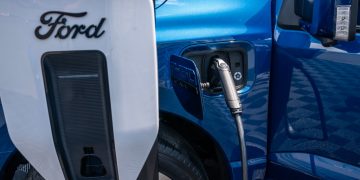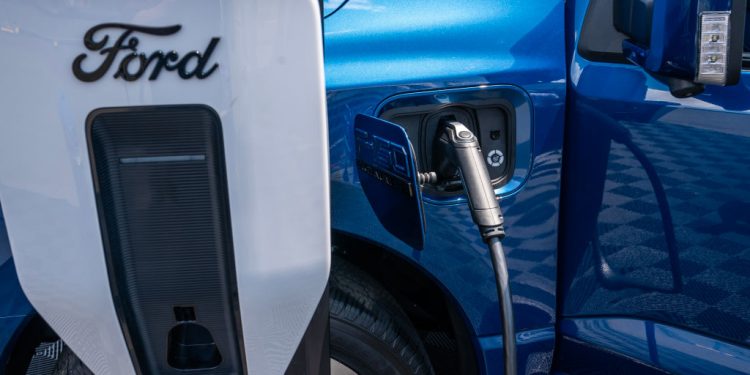The utopian scheme demanding electric vehicles rapidly replace internal combustion engines as our main means of transportation continues to hit roadblocks.
A post shared on X shared an ironic workaround one Ford dealership devised to address a major EV issue.
According to a video described as a “wild story” by podcaster CarDealershipGuy, one car lot in the Midwest had to install a diesel generator to handle EV charging requirements.
The clip featured Alan Haig, who is described as one of the top dealership advisers in the country.
Wild story.
A Ford dealer in the Midwest charging EVs with a diesel generator.
Alan Haig, one of the top Dealership Buy-Sell Advisors in the country, explains Ford’s struggle to transition to EVs in < 90 seconds: pic.twitter.com/vS3hx2DQfF
— CarDealershipGuy (@GuyDealership) August 2, 2023
Haig discussed how expensive it is to covert an auto dealership to handle EVs: “You’re going to have to invest, at one point it was $1.7 million per store to qualify to even get EVs shipped to your store. That’s a significant burden for almost every Ford dealer, because the average Ford store is pretty small.”
According to Haig, a Ford dealer may only sell around 500 vehicles a year, making it difficult to recoup the expensive upfront investment through uncertain future EV sales.
It turns out dealers were right to be skeptical. EVs are not selling. Axios reported on a Cox Automotive survey that concluded dealers have an almost three-month supply of EVs on hand, compared to a 54-day supply of gas-powered vehicles.
Despite the sales challenges, some dealers still want to get into the EV market. Haig shared a story about how one dealer got creative about the EV upgrades his dealership needed.
“The math on this sometimes gets a little comical,” Haig said.
One of Haig’s clients from the upper Midwest called his city to find out if the infrastructure existed to support an EV charging station. The dealer was advised the electrical capacity needed was not available, and could not be added.
The dealer went ahead with the charging station purchase from Ford, and installed it. However, for the electricity needed, he had to hook the charging station to a diesel generator, which he had concealed behind a wall.
One of the perks of EV ownership is progressive virtue signaling. You can say EVs are green all you want, but if you buy one from this particular Ford dealership, it will have been charged thanks to a diesel generator.
In a way, the dealer’s action makes clear a serious issue of EV usage. Far from being “green,” across the country much of the electricity needed to power EVS is generated by fossil fuels in the first place.
The power grid is already challenged in areas like California, largely because of the same kind of green ideas that led to the EV push. Where will all the extra capacity needed to charge large numbers of EVs come from?
Not only do EVs still rely on fossil fuels as energy, there are questions on how much of a savings there is in using electricity instead of gasoline.
According to Insider, the electricity needed to charge entry-level and mid-level EVs is more expensive than a gasoline fill up, especially when using a public charging station.
With dilemmas like these, its little wonder Ford is losing an estimated $4.5 billion on it EV line this year, up from a $2.1 billion loss the year before.
Despite top down government pressure for acceptance, EVs will never be practical, or deliver on their promised benefits, without serious revisions to the way electricity is generated and distributed in America.
It would be much more efficient to continue using reliable gas burning vehicles until EVs actually become practical.
This article appeared originally on The Western Journal.


























 Continue with Google
Continue with Google